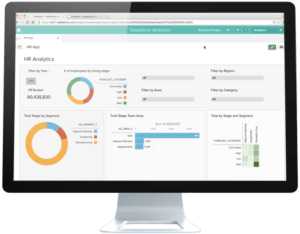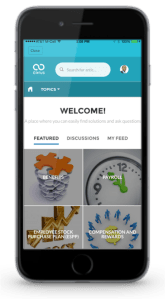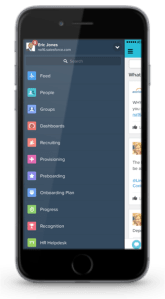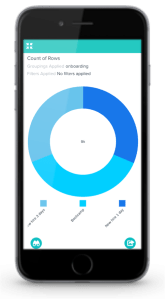
Salesforce.com announced a new set of human resources tools today designed to improve employee engagement. The tools have been mostly adapted from existing Salesforce products and represent a significant departure from Salesforce’s traditional sales and marketing targets.
“What we are doing is taking the best of our technologies and allowing customers to turn them inward and deliver the same type of success to their employees,” Bobby Amezaga, director of product marketing at Salesforce told TechCrunch.
The company has created an HR platform consisting of a combination of tools from Salesforce and its partners. Salesforce has built a new Employee Journeys application for on-boarding and on-going management and HR Helpdesk software, built on top of the Salesforce Service Cloud customer service software, to provide a digital channel for responding to specific issues or questions.
The platform also includes Employee Communities, which is built on top of the Salesforce enterprise social tool, Chatter, for more in-depth conversations among employees or with HR personnel. The final piece is Salesforce HR Analytics, which has been specifically tuned to help HR personnel measure and track human resources metrics.
“Employees want great job experiences, not just paychecks, in the same way that customers want to feel valued,” Denis Pombriant, an analyst with Beagle Research wrote in an email. “A lot of Salesforce customer experience ideas translates to employees. The use of things like Chatter to involve more people in customer experiences helps to give meaning (in a small way) to job life and Salesforce HR tools provide a way to manage processes.”
A Little Help From Its Friends

Salesforce recognizes it can’t do everything, and it’s content to let others fill in the blanks. That could include custom apps customers might have been building themselves or partner apps on AppExchange, the Salesforce marketplace. It also involves traditional HR systems of record in place in every large company on the planet, such as traditional offerings like PeopleSoft or more modern solutions like Workday.
Keep in mind, this is version 1.0 of the platform, and Salesforce typically throws something out there, then very soon begins building more functionality on top of that. For now, it’s taken advantage of its existing tools that thus far has been reserved for sales and marketing, and repackaged them for managing employees.
“The core components of Salesforce –- cloud objects, workflows, communities, collaboration, and analytics –- can be applied to many areas of the enterprise, and we’re increasingly seeing customers build custom apps beyond pure CRM (today enterprise customers can provide chatter to all employees). This should make it easier for [Salesforce] to do it in the HR space,” Rebecca Wettemann, vice president at Nucleus Research wrote in email.
In a sense, it’s a typical consumerization play. Employees used to using simple tools at home, don’t want to use clunky enterprise software at work to interact with HR. If you believe the data supplied by Salesforce, it really does make a difference with one in four new employees leaving after a year if they aren’t satisfied with internal systems. Disaffection also translates into real money with Salesforce claiming it costs 2x an employee’s salary to find and train a replacement.
Expanding Markets And Competition



Zenefits, a cloud startup, has certainly made hay by providing a new way to deal with employee on-boarding, and Salesforce has apparently been paying attention. Just this week, TechCrunch reported that “Zenefits could raise somewhere between $300 million and $500 million at a valuation north of $3 billion.” That kind of dough makes for a serious contender.
Salesforce claims today’s announcement is not a reaction to market forces, but to customer requests for tools that offer Salesforce functionality to track and communicate with employees instead of customers.
“It really started with conversations we’ve had with customers over the past couple of years,” Amazega said. “Happy customers are great, but [they] want happy engaged employees too,” he said.
The nature of the platform is such that Amazega believes by providing a central way of managing the HR function, it will benefit partners and companies that have already built custom HR apps, rather than competing with them.
Today’s announcement also signals that Salesforce is expanding beyond sales and marketing and could be looking for ways to extend its reach deep into the enterprise. Today, it’s HR, but tomorrow it could be applying its tools to a range of enterprise problems.
Salesforce announced that the new HR tools would be available immediately.
Application photos courtesy of Salesforce.com.



